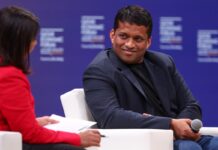2025 marks a turning point in technological history. Artificial intelligence (AI) is no longer theoretical; it’s a driving force reshaping economies, influencing politics, and forcing critical questions about human responsibility. The central debate has shifted from if AI will change the world, to who will decide how. Governments, tech companies, and leading researchers are locked in a struggle over regulation: determining the rules, defining who benefits, and controlling the power to deploy or certify advanced AI models.
The stakes are immense. Europe, the United States, and China are pursuing divergent strategies, while prominent AI scientists are sounding alarms about unchecked development. This is not merely a technological race; it’s a battle for the future of global order.
Fragmented Regulation: Three Approaches Collide
The world is fracturing into distinct regulatory zones, creating a complex landscape for AI development and deployment.
The European Union: Pioneering Rigorous Oversight
The EU is leading with the AI Act, the first comprehensive attempt to categorize and regulate AI based on risk: unacceptable, high, limited, and low. The aim is to protect citizens and fundamental rights while avoiding abuse in sensitive areas like healthcare, justice, and public administration.
Margrethe Vestager, former European Commission executive vice president, emphasizes that “protecting citizens is a prerequisite for innovation.” However, many tech companies argue that overregulation will stifle progress. Vassilis Stoidis, CEO of 7L International, suggests strengthening existing data protection laws instead of creating new, potentially restrictive AI-specific frameworks.
Europe’s challenge isn’t just creating the rules, but enforcing them without its own dominant tech giants to drive implementation at scale.
The United States: Regulation Through the Back Door
The US avoids sweeping legislation like the EU’s AI Act, relying instead on executive orders, agency guidelines, state-level initiatives, and export controls on advanced chips. This approach prioritizes innovation while attempting to limit the transfer of strategic technologies to China.
Former President Trump has reportedly considered pressuring states to halt AI regulation, reflecting a commitment to minimal intervention. The US model favors giving companies room to grow, but critics argue it lacks the systematic protections found in the EU.
China: Control, Speed, and Strategic Dominance
China has adopted some of the fastest and most stringent AI regulations globally, including rules on algorithms, deepfakes, and a state-controlled licensing system. The underlying philosophy prioritizes national interests: AI is treated as strategic infrastructure subject to strict oversight.
This approach allows for rapid deployment of new technologies at scale, but critics point to a lack of transparency, independent oversight, and restrictions on user freedom.
The Voices of Caution: Scientists Demand Accountability
Leading AI researchers warn that unchecked development poses existential risks.
Yoshua Bengio, one of the “godfathers” of AI, advocates for mandatory safety testing, transparent training data, and international coordination akin to nuclear energy regulation. Geoffrey Hinton, who left Google to speak freely, warns that large-scale models develop unpredictable behaviors and insists on international cooperation, limits on autonomy, and a transition to secure architectures.
Stuart Russell argues that traditional AI design, which maximizes goals, is fundamentally flawed. He proposes systems that defer to human control, acknowledging that current machines are already beyond full understanding. Timnit Gebru adds that the debate must include fairness, addressing risks of discrimination, bias, and social inequality.
The Path Forward: A New International Architecture
Experts propose a global regulatory framework built on three pillars:
- Frontier AI International Certification Authority: An independent body to test, assess, and certify advanced AI models before release.
- Education and Transparency Registry: Mandatory disclosure of training resources, computing power, and core model principles (without revealing trade secrets) to ensure democratic accountability.
- Mandatory Safety Tests: Rigorous evaluation of AI’s ability to misinform, generate malicious code, manipulate, or exhibit unintended emergent behaviors.
Additional measures include economic incentives for safe innovation (subsidies, tax breaks), civil rights protections (privacy, transparency, human oversight), and a potential international treaty setting limits on the development of artificial general intelligence (AGI).
The Stakes: Who Will Control the Future?
The battle over AI regulation is not just institutional; it’s economic, geopolitical, and social. The question isn’t just about how to regulate AI, but who will set the global standards and benefit from this technology.
The next two years will be critical. The window for shaping AI’s trajectory is closing fast. The ultimate question remains: will AI serve humanity, or will humanity be defined by it? The answer depends on the decisions made now.





























![[Огляд] Xiaomi MiJia M365 – відмінний [електросамокат] від надійного китайського виробника](https://web-city.org.ua/wp-content/uploads/2018/01/P1160682_1-218x150.jpg)













![[DNS probe finished no Internet] Як виправити помилку?](https://web-city.org.ua/wp-content/uploads/2018/01/1-42-218x150.jpg)














![Wi-Fi в метро: як це працює і як підключитися до інтернету [Посібник]](https://web-city.org.ua/wp-content/uploads/2018/01/wifi-gratuit-metro-parsien-100x70.jpg)












